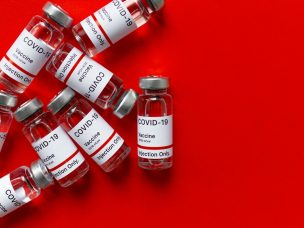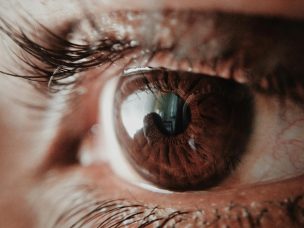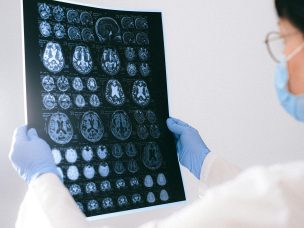NMOSD impacts the eyes, spinal cord, and brain. It is a rare autoimmune neurological disorder that can cause severe disabilities such as blindness and paralysis. It often coexists with other autoimmune diseases such as lupus, Sjogren’s syndrome, or rheumatoid arthritis.
Neuromyelitis Optica Spectrum Disorder (NMOSD) is a debilitating autoimmune disorder that affects the optic nerves, spinal cord, and brain. It occurs when immune cells mistake healthy nerve cells for foreign invaders and attack them. It can lead to inflammation, swelling, and damage to the nerves.
Related: Unlocking the Link Between NMOSD and Autoimmune Diseases
Understanding NMOSD
When NMOSD occurs, the body produces the antibody anti-AQP4. These antibodies attack Aquaporin-4 (AQP4) water channels, which regulate the flow of fluids in the central nervous system. AQP4 is a protein found in the cell membrane of astrocytes.
This attack causes inflammation and damage to the optic nerves, spinal cord, and brain. It induces damage to the astrocytes, nerve cells, and myelin insulation structure which are necessary for transmitting nerve signals.
Symptoms
Symptoms of NMOSD can include vision loss, numbness or tingling in the limbs, muscle weakness, and pain. It can also cause fatigue, trouble walking or speaking, bladder control problems, dizziness and vertigo, and cognitive impairment. It can also cause hiccups and uncontrollable vomiting.
In some cases, the symptoms may be mild but can become more severe or even life-threatening if not managed properly. Children who have NMOSD typically experience intense symptoms such as seizures, comas, and confusion.
The problem with NMOSD is that it causes relapses and remissions. These relapses can cause a sudden onset of new symptoms, worsening of existing symptoms, or both. Unfortunately, relapses are common.
However, they are reversible. The long-term impact of the relapses is what causes the most damage. For this reason, it is vital to be aware of your body and seek medical attention when any new symptoms occur.
Causes
The exact cause of NMOSD is unknown. However, researchers believe it results from an autoimmune response triggered by a viral or bacterial infection. It also links to specific genetic markers, environmental factors, and gender. Women have a higher chance of experiencing NMOSD than men.
Related: Cognitive Performance and Quality of Life in NMOSD
Diagnosis
Specialists sometimes misdiagnose NMOSD for multiple sclerosis (MS). However, NMOSD differs from MS in that it does not affect the entire central nervous system. NMOSD typically impacts the optic nerve and the spinal cord. MS affects the entire brain and spinal cord.
Diagnosis of NMOSD depends on a combination of symptoms, medical history, and imaging tests such as MRI. Here are the tests used to diagnose NMOSD.
MRI
The MRI scan will help your doctor identify any lesions or damage in the brain and spine.
Blood tests
Blood tests can check for antibodies associated with NMOSD. Blood tests help specialists determine the difference between NMOSD and MS. To detect relapses, serum glial fibrillary acidic protein (GFAP) and serum neurofilament light chain will be examined.
Have you been recently diagnosed with NMOSD and need help understanding how it will impact your quality of life? Read Care Resources and Expenses for Neuromyelitis Optica Spectrum Disorder for more information.
Optical Coherence Tomography
Optical coherence tomography assesses the health of the optic nerve. Specialists will analyze the thickness of the nerve fibers, their layers, and the boundaries of each layer. Patients who have inflammation of the optic nerve tend to experience vision loss.
Spinal Tap/Lumbar Puncture
A spinal tap will help your doctor identify any inflammation or antibodies in the brain and spine. This test involves inserting a needle in the lower back to extract a small amount of spinal fluid.
Neurological exam
Doctors perform neurological exams to assess your balance, reflexes, vision, and other functions.
Stimuli Response Test
The stimuli response test determines if there are any issues with the way the body responds to the stimuli of touch, sound, and light. This test is mostly used in children who have NMOSD.
Treatment
The goal of treatment for NMOSD is to reduce inflammation, prevent relapses, and protect vision. Treatment will depend on the gravity of symptoms but may include medications such as corticosteroids, disease-modifying therapies (DMTs), and plasmapheresis, monoclonal antibodies. Physical therapy may help manage mobility issues.
Corticosteroids
Corticosteroids work by decreasing inflammation. Patients can choose to take them orally, through an injection into a muscle or joint, or administered intravenously (IV). Common corticosteroids used to treat NMOSD include prednisone and methylprednisolone. They help reverse symptoms of a recent relapse. They can also work to prevent future relapses and reduce the risk of long-term disability.
Disease-Modifying Therapies
Disease-modifying therapies (DMTs) can help reduce the frequency and severity of relapses. They work by changing how the body responds to the disease, allowing for more effective treatment.
Related: Relationship Between Life Quality and Disability Progression in NMOSD Patients
Plasmapheresis
Plasmapheresis involves extracting and filtering a patient’s blood in order to remove any antibodies that may be causing an overactive immune response. It reduces inflammation which in turn prevents relapses. Plasmapheresis is only used to treat acute attacks of NMOSD.
Monoclonal Antibody Drugs
Monoclonal antibodies target specific molecules in the body and help reduce inflammation. They work by blocking specific receptors responsible for inflammation or activating other pathways that can help suppress inflammation. Common monoclonal antibodies used for NMOSD include rituximab and eculizumab.
Physical Therapy
Physical therapy helps patients manage mobility issues caused by NMOSD. A physical therapist will work with patients to help strengthen and stretch muscles, improve their range of motion, and develop strategies for living independently.
Lifestyle Changes
In addition to medications and physical therapy, lifestyle modifications can also play a role in managing NMOSD. Eating a healthy diet, getting plenty of rest, and exercising regularly are all essential factors. Patients may also benefit from social support to help manage stress and cope with their condition.
Looking for more therapeutic strategy options for NMOSD? Check out Therapeutic Perspectives on Neuromyelitis Optica Spectrum Disorder for more information.
Coping With NMOSD and Maintaining a High Quality of Life
Living with NMOSD can be challenging and life-altering. Even with treatment, the disease can still cause relapse episodes that lead to disability progression. It is vital for NMOSD patients to find ways to cope with the changing nature of their condition and maintain a high quality of life.
Patients can still enjoy a favorable quality of life with suitable stress-relieving activities, treatment, and support.












